FOR PATIENTS WITH STAGE 2 T1D 8 YEARS AND OLDER
Treatment path
Once you and your eligible patient have decided that TZIELD is right for them, the treatment path begins.


Steps to take before starting TZIELD
Prior to initiating TZIELD with your patient, obtain a complete blood count and liver enzyme tests.

Enroll in TZIELD COMPASS
Your Key Actions
- Complete the enrollment form in its entirety
- Capture patient/caregiver consent
- Most health plans require lab results from the previous 6 months
- Ensure labs confirm and support Stage 2 diagnostic criteria:
- Positive for at least 2 islet AAbs
- Diagnosed with dysglycemia without overt hyperglycemia (eg, via OGTT)
- Ensure the clinical history of the patient does not suggest type 2 diabetes.
- Discuss site-of-care options/preferences with patients early
Sanofi Support
- Field Reimbursement Manager
- Answers questions regarding enrollment form submission
- Provides education on payer policy requirements
- COMPASS Navigator
- Connects with patients to answer questions
- Provides copay information to eligible patients
- Therapeutic Education Manager
- Educates patients and site-of-care staff on the infusion process

Finalize site of care
(Infusion center, at home, or hybrid)
Your Key Actions
- Identify site of care, considering:
- Insurance coverage
- Location
- Transportation
- Scheduling needs
- Determine method of infusion (daily IV, midline, or PICC)
- Provide above to TZIELD COMPASS
AAb=autoantibody; IV=intravenous; OGTT=oral glucose tolerance test; PICC=peripherally inserted central catheter.
Sanofi Support
- COMPASS Navigator and/or Field Reimbursement Manager
- Help you understand treatment site options (based on the patient’s benefits)
- Identify options outside your geographic area if preferred (eg, near patient’s home)

Schedule infusion
Your Key Actions
- Order baseline labs, including:
- Complete blood count with differential
- Liver enzyme tests
- EBV and CMV assessment
- Active serious or chronic active infection (other than localized skin infections) assessment
- Inform patients about possible side effects including but not limited to:
- Signs and symptoms of CRS
- Serious infections
- Lymphopenia
- Hypersensitivity reactions
- Inform patients regarding pregnancy and lactation risk, as appropriate
- Instruct patients about required vaccines and premedication
- Address any lingering questions
Sanofi Support
- Field Reimbursement Manager
- Provides education on payer policy requirements
- Medical Science Liaison
- Available to assist with understanding medical management topics, including:
- Management of potential side effects
- Premedication and vaccine guidance
- Laboratory orders
- Available to assist with understanding medical management topics, including:

Complete infusion
Your Key Actions
- Order and review follow-up labs to monitor blood counts, liver enzymes and signs of infection
- Perform check-ins and discuss side effects
- Discuss continuation of pre-medications beyond Day 5, as appropriate
- Address lingering questions and help patients stay on track with treatment
- Educate on future metabolic monitoring and symptoms consistent with progression to Stage 3 T1D
Sanofi Support
- Therapeutic Education Manager
- Provides TZIELD dosing and nursing order resources
TZIELD COMPASS is there to support your patients through every step of their treatment path.
Important Safety Information Anchor
INDICATION
TZIELD is a CD3-directed monoclonal antibody indicated to delay the onset of Stage 3 type 1 diabetes (T1D) in adults and pediatric patients aged 8 years and older with Stage 2 T1D.
IMPORTANT SAFETY INFORMATION
WARNINGS AND PRECAUTIONS
- Cytokine Release Syndrome (CRS): CRS occurred in TZIELD-treated patients during the treatment period and through 28 days after the last drug administration. Prior to TZIELD treatment, premedicate with antipyretics, antihistamines and/or antiemetics, and treat similarly if symptoms occur during treatment. If severe CRS develops, consider pausing dosing for 1 day to 2 days and administering the remaining doses to complete the full 14-day course on consecutive days; or discontinue treatment. Monitor liver enzymes during treatment. Discontinue TZIELD treatment in patients who develop elevated alanine aminotransferase or aspartate aminotransferase more than 5 times the upper limit of normal (ULN) or bilirubin more than 3 times ULN.
- Serious Infections: Use of TZIELD is not recommended in patients with active serious infection or chronic infection other than localized skin infections. Monitor patients for signs and symptoms of infection during and after TZIELD administration. If serious infection develops, treat appropriately, and discontinue TZIELD.
- Lymphopenia: Lymphopenia occurred in most TZIELD-treated patients. For most patients, lymphocyte levels began to recover after the fifth day of treatment and returned to pretreatment values within two weeks after treatment completion and without dose interruption. Monitor white blood cell counts during the treatment period. If prolonged severe lymphopenia develops (<500 cells per mcL lasting 1 week or longer), discontinue TZIELD.
- Hypersensitivity Reactions: Acute hypersensitivity reactions including serum sickness, angioedema, urticaria, rash, vomiting and bronchospasm occurred in TZIELD-treated patients. If severe hypersensitivity reactions occur, discontinue TZIELD and treat promptly.
- Vaccinations: The safety of immunization with live-attenuated (live) vaccines with TZIELD-treated patients has not been studied. TZIELD may interfere with immune response to vaccination and decrease vaccine efficacy. Administer all age-appropriate vaccinations prior to starting TZIELD.
- Administer live vaccines at least 8 weeks prior to treatment. Live vaccines are not recommended during treatment, or up to 52 weeks after treatment.
- Administer inactivated (killed) vaccines or mRNA vaccines at least 2 weeks prior to treatment. Inactivated vaccines are not recommended during treatment or 6 weeks after completion of treatment.
ADVERSE REACTIONS
Most common adverse reactions (>10%) were lymphopenia, rash, leukopenia, and headache.
USE IN SPECIFIC POPULATIONS
- Pregnancy: May cause fetal harm.
- Lactation: A lactating woman may consider pumping and discarding breast milk during and for 20 days after TZIELD administration.
Please see full Prescribing Information, including patient selection criteria, and Medication Guide. View Important Safety Information page.
INDICATION
IMPORTANT SAFETY INFORMATION
INDICATION
TZIELD is a CD3-directed monoclonal antibody indicated to delay the onset of Stage 3 type 1 diabetes (T1D) in adults and pediatric patients aged 8 years and older with Stage 2 T1D.
IMPORTANT SAFETY INFORMATION
WARNINGS AND PRECAUTIONS
- Cytokine Release Syndrome (CRS): CRS occurred in TZIELD-treated patients during the treatment period and through 28 days after the last drug administration. Prior to TZIELD treatment, premedicate with antipyretics, antihistamines and/or antiemetics, and treat similarly if symptoms occur during treatment. If severe CRS develops, consider pausing dosing for 1 day to 2 days and administering the remaining doses to complete the full 14-day course on consecutive days; or discontinue treatment. Monitor liver enzymes during treatment. Discontinue TZIELD treatment in patients who develop elevated alanine aminotransferase or aspartate aminotransferase more than 5 times the upper limit of normal (ULN) or bilirubin more than 3 times ULN.
- Serious Infections: Use of TZIELD is not recommended in patients with active serious infection or chronic infection other than localized skin infections. Monitor patients for signs and symptoms of infection during and after TZIELD administration. If serious infection develops, treat appropriately, and discontinue TZIELD.
- Lymphopenia: Lymphopenia occurred in most TZIELD-treated patients. For most patients, lymphocyte levels began to recover after the fifth day of treatment and returned to pretreatment values within two weeks after treatment completion and without dose interruption. Monitor white blood cell counts during the treatment period. If prolonged severe lymphopenia develops (<500 cells per mcL lasting 1 week or longer), discontinue TZIELD.
- Hypersensitivity Reactions: Acute hypersensitivity reactions including serum sickness, angioedema, urticaria, rash, vomiting and bronchospasm occurred in TZIELD-treated patients. If severe hypersensitivity reactions occur, discontinue TZIELD and treat promptly.
- Vaccinations: The safety of immunization with live-attenuated (live) vaccines with TZIELD-treated patients has not been studied. TZIELD may interfere with immune response to vaccination and decrease vaccine efficacy. Administer all age-appropriate vaccinations prior to starting TZIELD.
- Administer live vaccines at least 8 weeks prior to treatment. Live vaccines are not recommended during treatment, or up to 52 weeks after treatment.
- Administer inactivated (killed) vaccines or mRNA vaccines at least 2 weeks prior to treatment. Inactivated vaccines are not recommended during treatment or 6 weeks after completion of treatment.
ADVERSE REACTIONS
Most common adverse reactions (>10%) were lymphopenia, rash, leukopenia, and headache.
USE IN SPECIFIC POPULATIONS
- Pregnancy: May cause fetal harm.
- Lactation: A lactating woman may consider pumping and discarding breast milk during and for 20 days after TZIELD administration.
Please see full Prescribing Information, including patient selection criteria, and Medication Guide. View Important Safety Information page.

